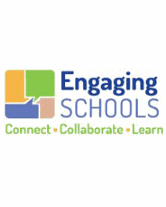Objectives
- Students will be introduced to a problem-solving procedure.
- Students will participate in a structured practice of resolving conflict.
Materials
- Chalkboard and chalk, white board and markers
Procedures
- Explain that when there is a conflict, there is a problem.
- When trying to resolve conflicts, it helps to have a way to think about the problem and to attempt to solve it.
- Place the following steps on the board:
- Define the problem.
- Brainstorm solutions.
- Choose a solution and act on it.
- Go over each step with the class.
- Point out that before the problem solving begins, the people in the conflict have to agree to work it out. In order for problem solving to work, they have to agree to really try to work it out, and to not yell or call names. They want to DE-escalate the conflict, not escalate it.
- Emphasize that in step two they want to come up with as many possible solutions as they can.
- In step three they want to choose a solution(s) that is win-win.
- Encourage students to define problems in a way that does not affix blame.
Excerpted from Elementary Perspectives: Teaching Concepts of Peace and Conflict by William J. Kreidler.




